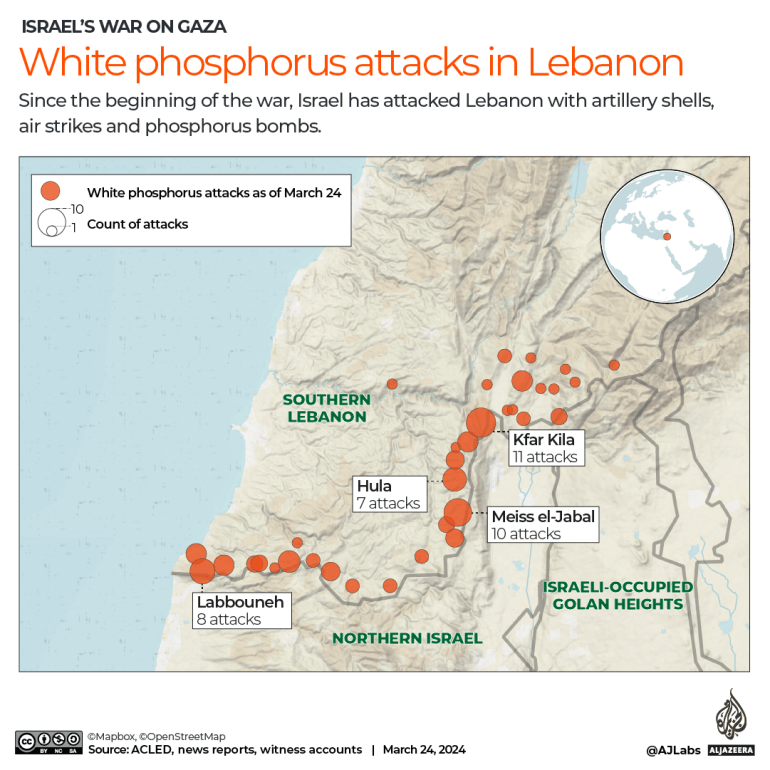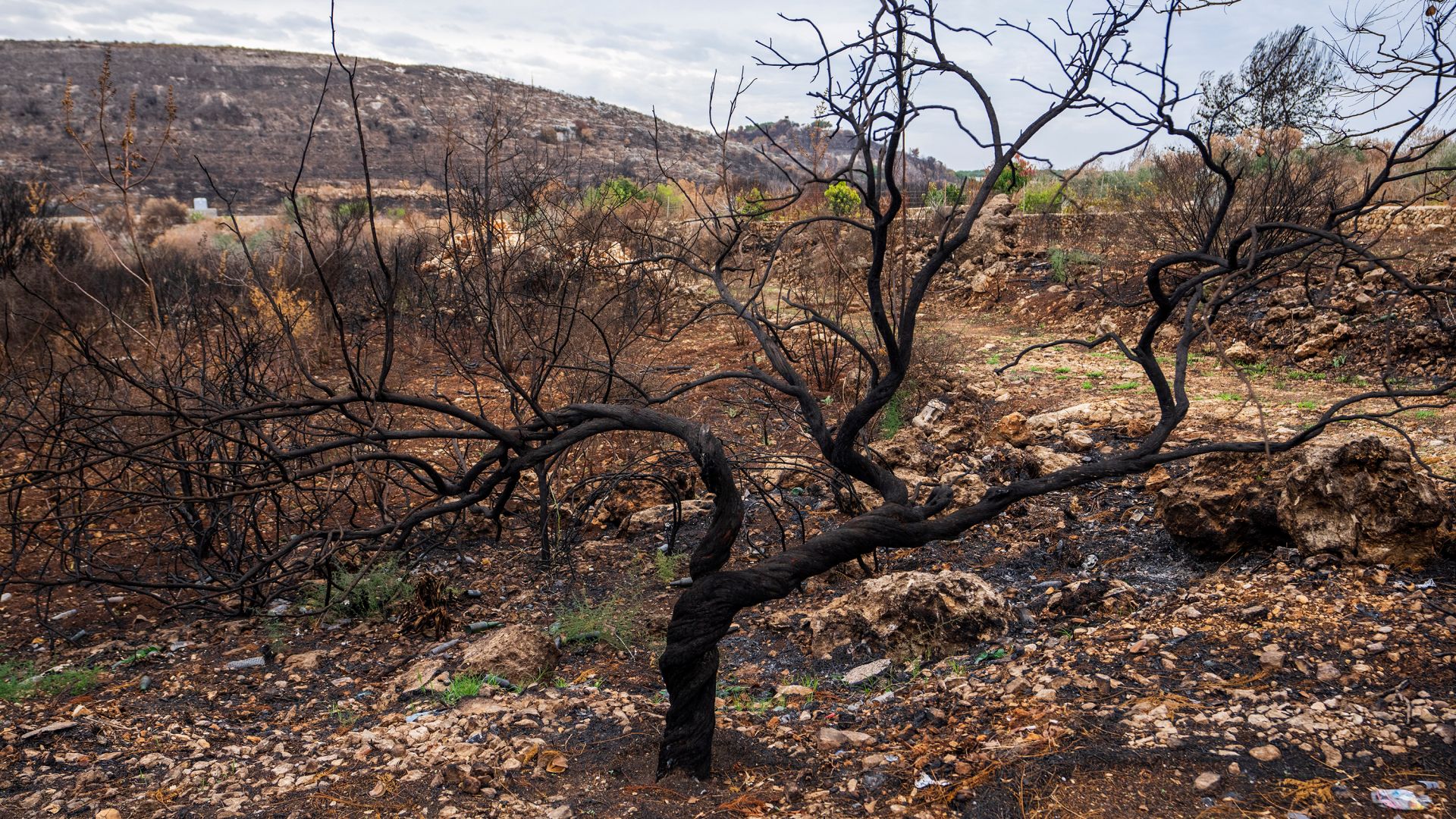Israel's toxic legacy: White phosphorus bombs on south Lebanon
Beirut, Lebanon - Abbas Baalbaki, an environmental chemistry researcher at the American University in Beirut (AUB), has been looking at white phosphorous dropped by Israel onto Lebanese soil for nearly six months.
Then, one day, a sample he and a colleague were looking at burst into flames.
That should not have happened. The samples had been dropped over Kfar Kila on October 17 and collected on November 10 after it had rained in the area.
They had been “spent” for nearly a month by the time Baalbaki tested them.
He had read all the literature on white phosphorous and taken all the precautions - the samples should not have been active.
“[They] began emitting fumes,” Baalbaki recounted to Al Jazeera.
A few seconds of exposure to the fumes was enough to give Baalbaki brain fog, lack of concentration, extreme headaches, fatigue and stomach cramps for days.
“I called my colleague and asked him how he was feeling,” he said. “He had the same symptoms.
“I hadn’t understood how toxic it is.”

The white phosphorous dropped on Lebanon, Baalbaki believes, remains active, very toxic and flammable for much longer than information on the topic indicates.
He joins a chorus of Lebanese researchers and experts warning that Israel’s tactics are causing long-term and potentially irreversible damage to south Lebanon’s environment, agriculture and economy, potentially making it uninhabitable.
